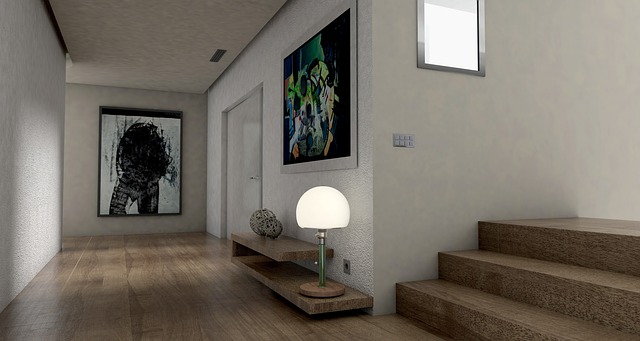The concept of a vacation has evolved dramatically over the past decade, shifting from simple trips to curated adventures to complex, interactive experiences that transcend physical borders. As technology advances, the line between travel and imagination blurs, giving rise to a new paradigm: the virtual reality vacation experience. This form of tourism offers travelers the chance to explore distant landscapes, historic eras, and fantastical realms from the comfort of their living rooms, while still engaging the senses and emotions that make a vacation memorable.
What Is a Virtual Reality Vacation Experience?
A virtual reality vacation experience is a fully immersive, computer-generated simulation that allows users to walk through, interact with, and participate in environments that mimic real-world locations or entirely fictional settings. By wearing a head-mounted display (HMD), users receive stereoscopic visuals, spatial audio, and sometimes haptic feedback, creating a sense of presence that feels almost tangible. The experience can be guided by a narrative or open-ended, enabling travelers to shape their own adventures within a digital landscape.
Core Technologies Driving Immersion
Several key technologies converge to produce compelling virtual reality vacation experiences:
- High-Resolution Displays: Modern HMDs offer resolutions that approach or exceed the human eye’s ability to distinguish pixels, eliminating the dreaded “screen door” effect.
- Advanced Tracking Systems: Inside-out or external tracking ensures that every head turn and hand gesture is captured with millisecond latency, preserving natural movement.
- Spatial Audio Engines: Directional soundscapes respond to the user’s orientation, reinforcing the illusion of being in a three-dimensional space.
- Haptic Interfaces: Controllers, gloves, or even full-body suits deliver tactile feedback, allowing users to feel textures, temperature changes, and physical resistance.
- Procedural Generation and AI: Adaptive environments adjust to user choices, creating dynamic storylines and interactions that feel fresh each time.
Designing a Truly Immersive Vacation
Creating a virtual reality vacation experience that resonates with users requires thoughtful design principles that balance authenticity, accessibility, and narrative depth.
User-Centered Immersion
Designers must consider the range of body sizes, movement speeds, and comfort levels among users. Adjustable field-of-view settings, motion sickness mitigation, and customizable control schemes help accommodate diverse audiences. Incorporating naturalistic locomotion—such as teleportation, stride-based walking, or gentle glide—reduces disorientation while preserving the sense of exploration.
A compelling storyline provides context and motivation. Whether the traveler is following a detective through a cyberpunk metropolis or exploring the ruins of an ancient civilization, a clear plot arc encourages sustained engagement. Branching narratives, where choices influence outcomes, amplify replay value and personal relevance.
Real-World Examples of Virtual Reality Vacations
Several pioneering projects illustrate the breadth and depth of virtual reality vacation experiences today:
- “Wander” by Google: A platform that allows users to walk through 360-degree photos of cities around the world, offering an almost photographic immersion.
- “The Ocean Rift” by Oculus Studios: An underwater exploration that combines realistic marine environments with interactive marine life encounters.
- “The Ancient World” by Unity: A historically accurate reconstruction of Mesopotamian cityscapes, complete with period-appropriate architecture and social dynamics.
- “Dreamscape” by a boutique studio: A surreal, AI-generated landscape where users sculpt the environment in real time, blending art and tourism into a unique vacation experience.
These examples demonstrate the versatility of the medium, from documentary-style tours to fully narrative-driven adventures.
Benefits Over Traditional Travel
Virtual reality vacation experiences offer several advantages that complement or even surpass conventional travel methods:
- Accessibility: Travelers with physical limitations, financial constraints, or health concerns can still enjoy global destinations without leaving home.
- Environmental Impact: By reducing the need for air travel and physical infrastructure, virtual vacations contribute to lower carbon footprints.
- Customizability: Users can tailor itineraries to their preferences—whether it’s exploring a city in its entirety or focusing on niche interests such as botanical gardens or hidden caves.
- Safety: In times of pandemics or geopolitical instability, virtual travel remains a safe alternative that does not expose users to risk.
- Educational Value: Virtual experiences can incorporate factual information, interactive quizzes, and guided tours by experts, turning leisure into a learning opportunity.
Challenges and Considerations
Despite its promise, the virtual reality vacation sector faces several obstacles that must be addressed to ensure broad adoption and sustainable growth.
Hardware Accessibility
High-quality headsets and motion trackers remain relatively expensive, limiting widespread access. As the market matures, however, economies of scale and innovative design are expected to lower barriers.
Content Creation Costs
Producing photorealistic environments, accurate physics, and sophisticated AI interactions requires substantial investment in talent and computational resources. Partnerships with content creators and open-source tools can mitigate costs.
Motion Sickness and Comfort
Some users experience nausea or disorientation, especially with mismatched motion cues. Continued research into smoother locomotion techniques and adjustable comfort settings is essential.
Intellectual Property and Cultural Sensitivity
Recreating real-world locations and cultural artifacts raises legal and ethical questions. Respectful collaboration with local communities and careful licensing agreements are vital to avoid exploitation.
The Future Landscape of Virtual Reality Vacations
As technology matures, several trends are poised to reshape the industry:
- Mixed Reality Integration: Combining AR overlays with VR environments will allow users to interact with the physical world while enjoying digital enhancements.
- Social VR Platforms: Shared virtual spaces will enable group tours, festivals, and community events, adding a social dimension to solitary adventures.
- AI-Generated Personalized Journeys: Machine learning algorithms can craft custom itineraries based on user preferences, behavior, and past experiences.
- Biofeedback and Emotional Tracking: Sensors that monitor heart rate, galvanic skin response, and facial expressions can adapt content in real time to match the user’s emotional state.
These developments hint at a future where virtual vacation experiences become indistinguishable from physical travel in terms of emotional impact and cultural richness.
Conclusion: Embracing the Metaverse as a Travel Frontier
The evolution of virtual reality vacation experiences reflects humanity’s enduring desire to explore, learn, and connect. By leveraging cutting-edge technology, thoughtful design, and collaborative storytelling, the metaverse offers an expansive playground where the boundaries of geography, time, and possibility dissolve. While challenges remain—particularly regarding accessibility, content authenticity, and user comfort—the potential benefits are profound. Whether one seeks to stroll through a reconstructed Pompeii, hike a digital version of the Amazon, or attend a virtual music festival hosted on a floating island, the next generation of travel invites us to reimagine what a vacation can be. As the metaverse grows, so too will our collective imagination, ensuring that the horizon of possibility extends far beyond the limits of our physical world.


